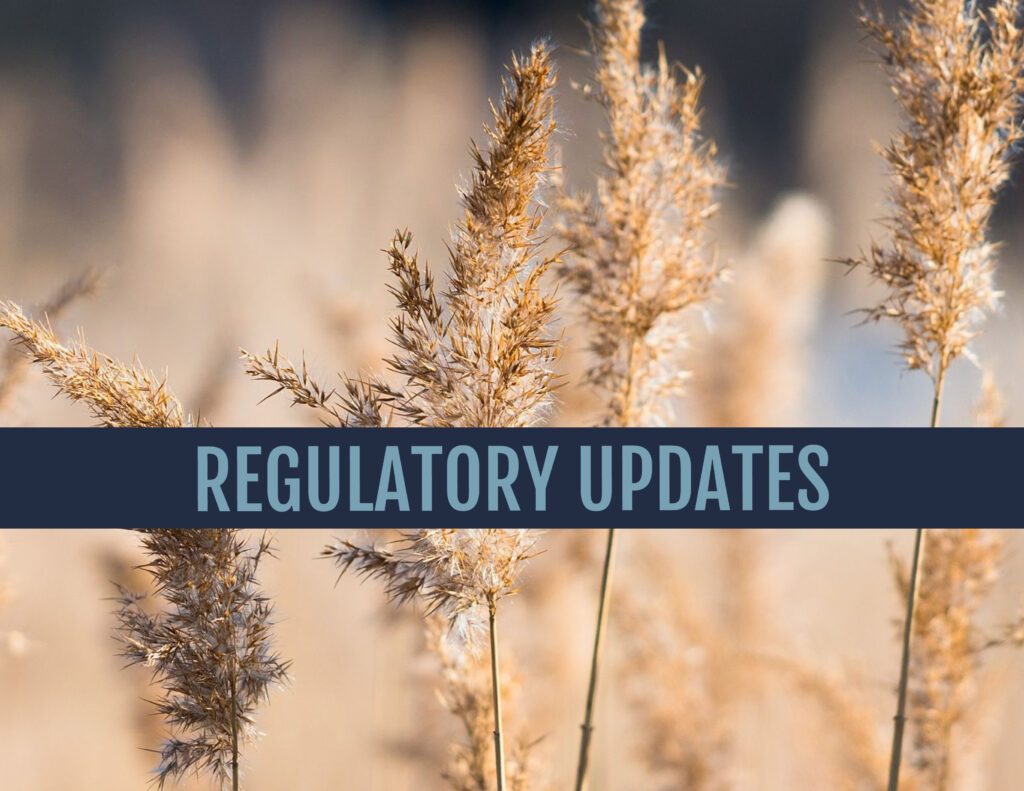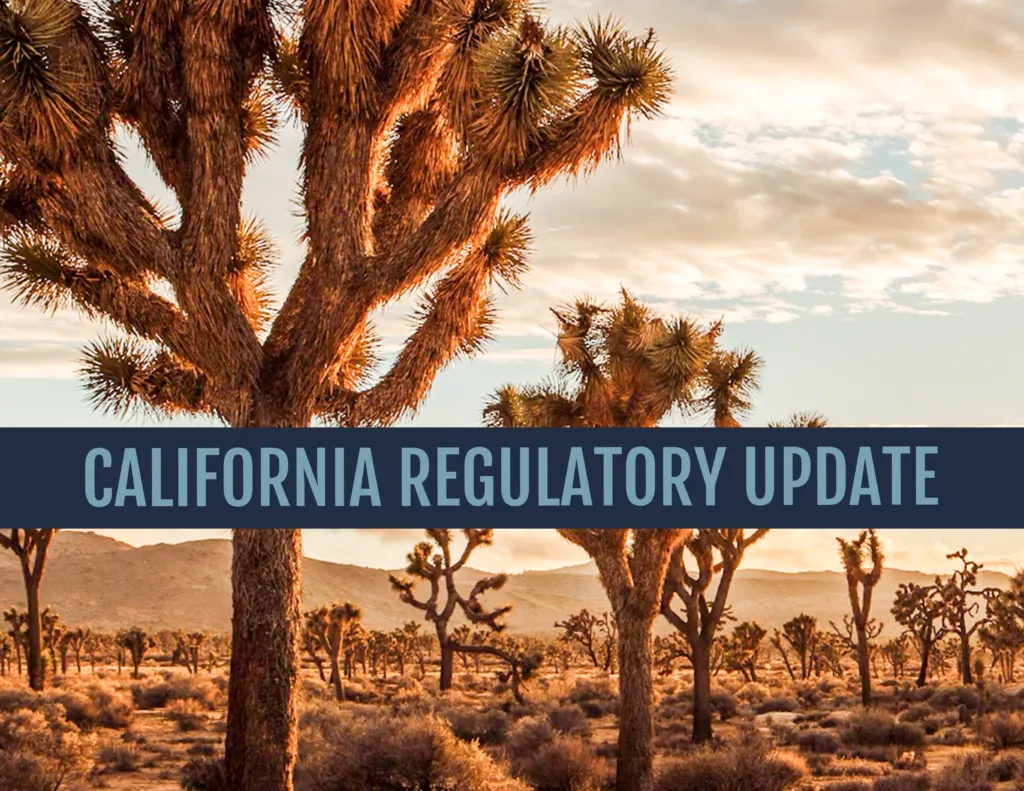
During the third quarter of 2024, there were several regulatory developments involving federal and state agencies, including one notable legislative action at the federal level and several in California. These updates are summarized in the following sections.
FEDERAL REGULATORY UPDATES
Department of Energy Coordinated Interagency Transmission Authorizations and Permits Program
On April 25, 2024, the Department of Energy (DOE) released a new federal permitting reform rule that established the Coordinated Interagency Transmission Authorizations and Permits (CITAP) Program, which aims to streamline federal environmental review and permitting processes for qualifying transmission projects by facilitating communication and coordination between project proponents and the DOE. To be a “qualifying project,” the project must meet the following stipulations, among others:
- be high-voltage (i.e., 230 kilovolts or above) or “regionally or nationally significant,”
- be used for the transmission of electric energy in interstate or international commerce for sale at wholesale, and
- need one or more federal authorizations that require preparation of an Environmental Impact Statement pursuant to the National Environmental Policy Act.
Under the rule, the DOE coordinates a federal interagency process to consolidate federal reviews within a 2-year period. To facilitate this process, on May 31, 2024, the Grid Deployment Office launched the CITAP online portal, which allows project proponents to submit applications and materials, track the status of applications, and communicate with the DOE and other federal agencies. As a prerequisite of the CITAP Program, project proponents are required to participate in the Integrated Interagency Preapplication Process, which is an iterative process that includes three key meetings as well as information sharing and document development with the DOE and other federal agencies through the portal.
United States Senate Energy Permitting Reform Act
The Energy Permitting Reform Act (EPRA) was introduced to the United States Senate on July 23, 2024. The EPRA aims to optimize the permitting process for different aspects of energy production and transmission, including, but not limited to, the following:
- reducing the deadline to file a lawsuit against an agency action for the permitting of an energy or mineral project from 6 years to 150 days, as well as limiting the period for an agency to act on a remand from the court to 180 days;
- expediting leasing and permitting decisions for energy projects on federal land by streamlining reviews for low-disturbance renewable energy projects and setting deadlines for renewable energy permitting, among other strategies;
- requiring at least one offshore wind lease sale and one offshore oil and gas lease sale each year from 2025 to 2029;
- requiring transmission planning regions to create joint plans for transmission construction and maximize the use of existing infrastructure and rights-of-way;
- setting a 90-day deadline to grant or deny liquefied natural gas export applications following environmental reviews; and
- allowing the Federal Energy Regulatory Commission to extend the deadline to commence construction for certain existing hydropower licenses.
Additional updates will be provided as this bill moves through Congress.
STATE REGULATORY UPDATES
California Public Utilities Commission General Order 131-D
On May 17, 2024, the California Public Utilities Commission (CPUC) issued a staff proposal for modifications to General Order (GO) 131-D of the R.23-05-018 rulemaking proceeding. The proposal was based on comments received during Phase 1 and Phase 2 of the R.23-05-018 proceeding. In addition, these modifications would be consistent with and implement Senate Bill 529, which was approved by the Governor on September 16, 2022 and aims to accelerate the issuance of CPUC permits for electrical transmission facilities and related infrastructure.
Recommendations to modify GO 131-D include the following:
- defining key terms, such as ”Existing Electrical Transmission Facility,” “Extension,” “Expansion,” “Upgrade,” “Modification,” “Equivalent Facilities or Structures,” and “Accessories;”
- clarifying the applicability of Permit to Construct (PTC) exemptions “g” and “h;”
- updating reporting requirements, such as requiring quarterly briefings from the utilities;
- establishing rebuttable presumption in favor of the California Independent System Operator Transmission Plan pursuant to Assembly Bill (AB) 1373;
- providing an option for protestors to request Commission review of an advice letter (i.e., informal request made to the CPUC outside a formal proceeding);
- establishing a process for non-incumbent utilities to share incumbent utilities’ rights-of-way;
- enabling applicant-submitted draft California Environmental Quality Act (CEQA) documents;
- requiring pre-filing consultations for PTCs and Certificate of Public Convenience and Necessity applications; and
- clarifying which projects may be eligible for 455-day or 270-day CEQA review timeframes.
The public comment period for the proposal ended on July 15, 2024, and the Proposed Decision was circulated for comment in October 2024. Phase 2 of GO 131-D modifications is expected to be resolved by January 31, 2025.
California State Assembly Bill 3238
AB 3238 was introduced to the Assembly Standing Committee on Utilities and Energy and the Assembly Standing Committee on Water, Parks, and Wildlife on March 21, 2024. The original bill included amendments to the Fish and Game Code regarding natural community conservation plans and incidental take determinations, as well as amendments to the Public Utilities Code regarding CEQA exemptions for project that expand existing public right-of-way across state-owned land for electrical infrastructure projects, designating a lead agency under CEQA for electrical infrastructure projects, and the CPUC’s power to approve and site necessary electrical infrastructure projects.
The bill was most recently amended on July 8, 2024. As of this amendment, the bill has been substantially reduced compared to when it was introduced. Currently, the bill’s most relevant provisions include designating the CPUC as the lead agency for electrical infrastructure projects under CEQA and requiring the CPUC to certify or adopt a CEQA document no later than 270 days after an application for an electrical infrastructure project is deemed complete. As of August 12, 2024, the bill was referred to suspense file.
Additional updates will be provided if this bill moves forward through the California legislature.
Department of Energy California Hydrogen Hub
On July 17, 2024, the Alliance for Renewable Clean Energy Systems (ARCHES) signed an agreement with the DOE that provides funding to build and expand clean energy infrastructure in California. As previously mentioned in Insignia’s 2023 Q4 Regulatory Update, ARCHES is one of seven awardees of the DOE’s Regional Clean Hydrogen Hubs (H2Hubs), which were established as a part of a larger hydrogen hub program funded through the Bipartisan Infrastructure Law. The purpose of these H2Hubs is to form the foundation of a nationwide clean hydrogen network that will help decarbonize multiple sectors of the economy. ARCHES is the first of the seven H2Hubs to officially sign an agreement with the DOE. ARCHES projects will span statewide and cover the entire hydrogen lifecycle, from production to use. ARCHES projects include, but are not limited to, the following:
- producing renewable hydrogen;
- replacing diesel-powered equipment with hydrogen fuel cell equivalents at the ports of Long Beach, Los Angeles, and Oakland;
- building hydrogen fuel stations for heavy-duty trucks and transit buses;
- transitioning key power plants to hydrogen; and
- creating a hydrogen-powered marine research vessel (i.e., Scripps Marine Vessel).


